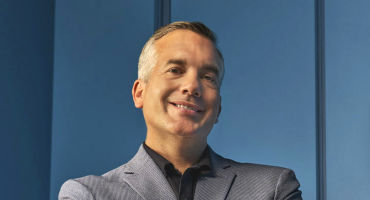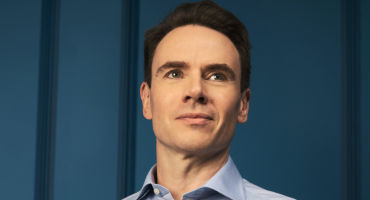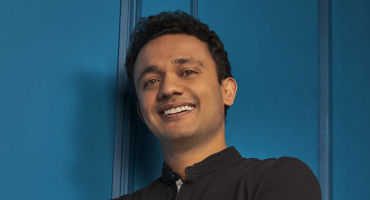Skip to main content
- Insights
- Sustainability
- About Us
- Careers
- My Account
Formats
Sustainable Investing
Stewardship Principles
Investment Solutions
The views expressed are those of the author at the time of writing. Other teams may hold different views and make different investment decisions. The value of your investment may become worth more or less than at the time of original investment. While any third-party data used is considered reliable, its accuracy is not guaranteed. Past performance does not predict future returns. For professional, institutional or accredited investors only. Capital at risk.
We believe that stewardship is at the heart of long-term financial and sustainable excellence. A stewardship-led investment approach combines responsible investing with the search for competitive long-term returns by uncovering and fostering companies that are what we call “good stewards”. These can be found in the most unexpected places as our two case studies demonstrate.
We define stewardship as how companies balance the interests of all stakeholders — such as customers, employees, communities, supply chains and the environment — in their pursuit of profits and how they incorporate material ESG risks and opportunities into their corporate strategy. In our view, stewardship can be assessed by how successfully company boards and managers balance people, the planet and profits when building long-term advantage by:
Clearly, even stewardship leaders are still on a journey, and at Wellington, in our products that consider stewardship, we seek to accelerate progress through robust engagement. Engagement enables us to hold management teams and boards accountable for their actions and to support or influence decisions that can maximise companies’ long-term value. Importantly, developing strong relationships with companies gives us the opportunity to champion and support long-termism as well as challenge insular thinking.
Engagement is even more critical when companies operate in higher-risk areas, as we illustrate below with a discussion on supply-chain issues at a leading tyre manufacturer and environmental sustainability at a global producer of household and consumer goods.
We view this tyre manufacturer as a stewardship leader because of its integrated strategy focused on returns and sustainability. As a premium player in a highly competitive sector, we expect it to benefit from the increasing focus on durability and the growing prominence of electric vehicles. In the meantime, we like the company’s conservative financial and operating profile and its drive to improve efficiency.
In our view, the company stands out within its sector for best-in-class “traceability” efforts relating to the raw materials it sources. Successful supply-chain oversight requires companies to trace their supply chain beyond Tier 1 (those suppliers with whom they have direct contractual relationships). Companies should not simply assume that each tier of suppliers will manage the oversight of the next tier down. Supply-chain visibility generally diminishes when moving beyond Tier 1 suppliers, and this is where the incidence of modern slavery is highest. Companies that can track inputs as far down the chain as possible increase the likelihood that suppliers follow codes of conduct, including those on modern slavery.
Responsible sourcing can also go a long way towards mitigating supply-chain risk. For tyre makers, natural rubber typically constitutes the largest sourcing risk. This tyre manufacturer goes to great lengths to farm rubber responsibly, including training 100,000 farmers annually, engaging actively to reduce deforestation and controlling the impact of rubber cultivation on local biodiversity and ecosystems. It traces its highly complex rubber value chain using a mobile application that aggregates stakeholder information about their practices. So far, the company has already gathered information from over 42,000 rubber-tree farmers on issues including working conditions and child labour practices. Its aim is to map 80% of natural rubber volumes by the end of this year. This visibility is crucial to the company’s ability to manage its inputs and take action to ensure enhanced resilience.
We consider this global producer of household and consumer goods an exemplary steward because of its impressive track record of high returns on capital and good growth outside of its home market combined with its strong progress on environmental sustainability. One of our concerns had been that success can breed complacency, but this company has a thoughtful and deliberate plan to innovate, reinvest and selectively acquire. Its leadership team is long-tenured but proactive in gaining an outside perspective.
We also commend the company’s evolution in the area of environmental sustainability. It formalised science-based targets in mid-2020, committing to reduce Scope 1 and 2 emissions by 50% by 2030 (from a 2018 base) and to actively address Scope 3. It plans to deliver a 30%-plus reduction in greenhouse gas emissions from suppliers from 2018 to 2025, building lower emissions requirements into supplier negotiations and evolving auditing and monitoring practices, while encouraging suppliers to measure, externally validate and disclose emissions. The company is also engaged in industry-wide efforts to better map sustainable palm-oil efforts, working closely to share data with other consumer-goods leaders. Its efforts are equally robust on shifting consumer preferences, including significant product and packaging innovation. That said, we still seek improvements in disclosure, board and management access and speed of change.
In our view, these and other good stewards have the potential to move from delivering a high return on investment over a short time frame to achieving high returns over the longer term and being great compounders of value. In turn, these high, stable returns potentially allow good stewards to further increase their focus on stewardship, creating a virtuous circle that can sustain and improve financial returns and stewardship over time.
Featured Unique Perspectives

How to find potential in volatile European high-yield markets?
Fixed Income Portfolio Manager Konstantin Leidman discusses why European high-yield investors need to be ready for both further volatility and the emergence of new opportunities.

Focusing on value amid rising global challenges and opportunities
Our Sustainable Investing (SI) Research Team offers a high-level view of 2023 research and engagement priorities.
URL References
Related Insights
Stay up to date with the latest market insights and our point of view.

Asia Tech: Building the technology for everything, everywhere, all at once
Yash Patodia articulates the investment opportunities within generative AI and mixed reality - two themes that are supercharging the tech industry. He outlines how Asia is the bedrock of the innovation and where he believes the world’s future growth will be.

Will emerging Asia leapfrog the energy transition?
Decarbonizing while maintaining economic growth presents tremendous challenges for developing countries in Asia. Is technological innovation the solution?

Private biotech market: Innovation, valuations, and capital efficiency
Co-heads of biotech private investments I-hung Shih and Nilesh Kumar join host Thomas Mucha to explore today's private biotech market, highlighting the state of deal flow, valuations, and innovation.

The value in valuing employees
Companies able to adapt and respond to challenges in the labor market will find themselves well positioned for the future, say Equity Portfolio Managers Yolanda Courtines and Mark Mandel.

Navigating the opportunities and challenges of the energy transition
Two of our climate- and energy-focused investment professionals discuss what the low-carbon transition may look like and how investors can think about the challenges and opportunities it represents.

The allocator’s perspective: three key decisions on EM equities
How can investors best access opportunities within an improving outlook for emerging market equities? Natasha Brook-Walters, co-head of iStrat, shares three key decision points for allocators.

Assessing the impact of climate resilience
Oyin Oduya and Louisa Boltz discuss the case for impact solutions focused on climate adaptation and share high-level guidelines to help overcome the associated measurement challenge.

ESG integration in public and private markets
Two ESG leaders discuss why ESG matters for investors, and how their teams help inform the investment process. They also share their priority research and engagement topics for 2023.

Why investing in themes for EM equities may reap rewards
Portfolio Manager Dáire Dunne outlines why he is increasingly optimistic about the potential opportunities within select EM equity themes this year.

Impact measurement and management practices
What constitutes an impact investment? How is impact measured? And, what are the benefits of impact investing? Our Impact Management and Measurement Practice Leader Oyin Oduya discusses our approach.

China internet: Identifying opportunities amid economic reopening
China’s re-opening and economic recovery from its zero-COVID policy has bolstered our optimism in Chinese internet companies.
URL References
Related Insights